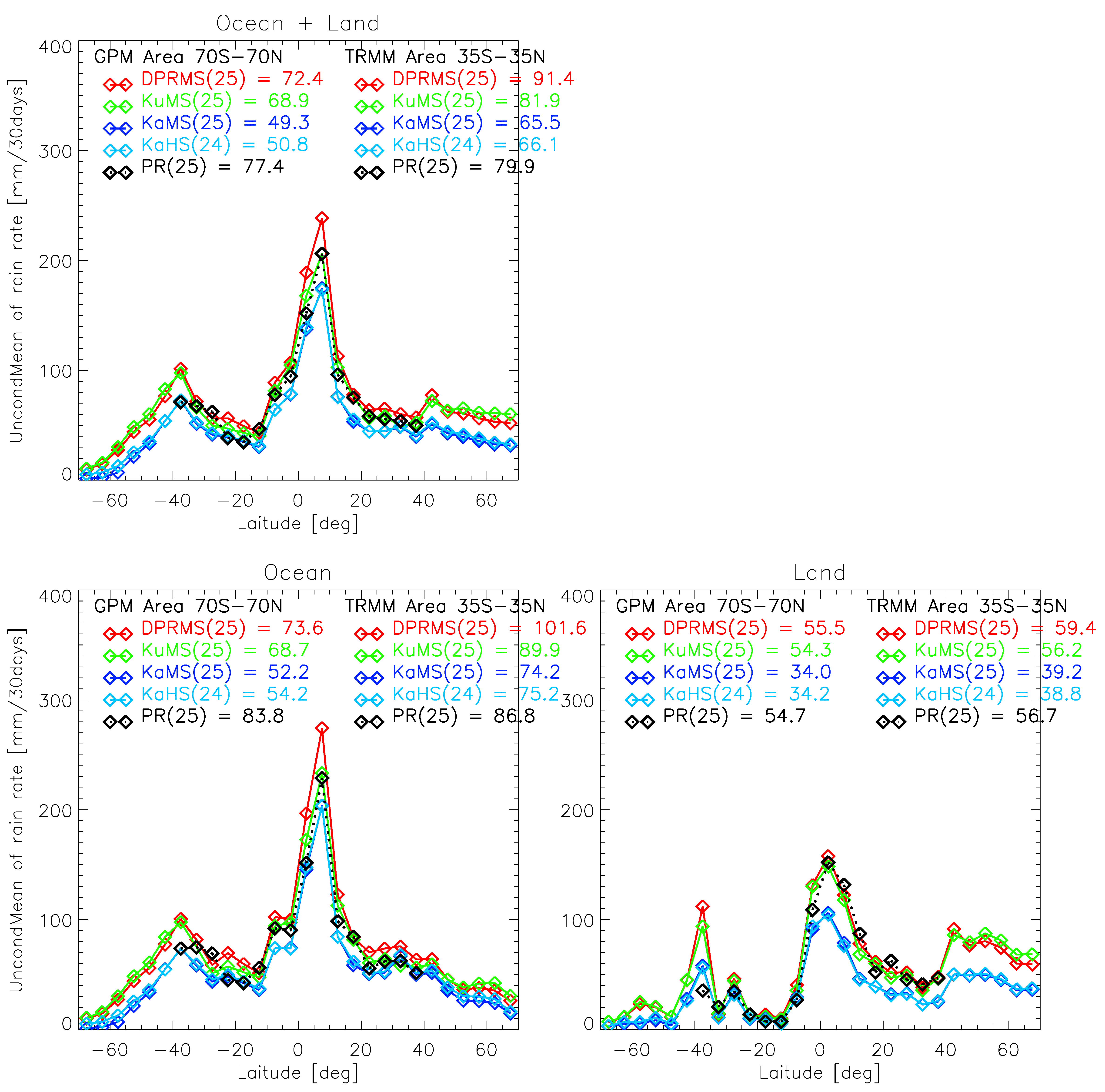Research of Tropical Rainfall Measuring Mission (TRMM)/ Precipitation Radar (PR)
JAXA Supercomputer System Annual Report April 2017-March 2018
Report Number: R17ER1400
Subject Category: Space Technology
- Responsible Representative: Teruyuki Nakajima, Earth Observation Research Center
- Contact Information: Takuji Kubota kubota.takuji@jaxa.jp
- Members: Naofumi Yoshida, Yoriko Arai, Tomohiko Higashiuwatoko, Takuji Kubota
Abstract
Calculation of the global rainfall map derived from Tropical Rainfall Measuring Mission (TRMM) during a period from 2000 to 2014 using the GSMaP algorithm (V07).
Checks of consistency between the TRMM Precipitation Radar (PR) algorithm (V08) and the GPM/DPR algorithm (V05) on June 2014 when both TRMM and GPM missions were in operation.
Reference URL
Please refer to http://www.eorc.jaxa.jp/TRMM/index_e.htm .
Reasons for using JSS2
The JSS2 is necessary for calculation of the long-term data which consists of multiple satellites and sensors for the precipitation measurement with earlier computational times for algorithm evaluations, improvements, and long-term production. Because of the complexity of the processing algorithms, strict business progress management, emergency response, detailed user response by the operation side, etc. are required. When we do not use the JSS2, it can be said that reprocessing in a short period cannot be achieved.
Achievements of the Year
TRMM/PR algorithms (V08 level2&level3) and GPM/DPR algorithms (V05 level2&level3) on June 2014 were processed by 8 times to check of consistency between TRMM/PR and GPM/DPR associated with the algorithm version update.
Figure 1 shows a zonal mean of surface precipitation using the most recent algorithms. Top panel is a result over ocean and land. Bottom left and right panels are results over ocean and land, respectively. It suggests that precipitation observed by PR and DPR/Ku are very close, though DPR/Ku&Ka is slight heavy over Ocean. The MMR and MML modules of the GSMaP algorithm (V7) were reprocessed for from 2000 to 2014. Machine learning aimed at improving the accuracy of GSMaP was performed by MATLAB.

Fig.1: It is a zonal mean of surface precipitation using the TRMM/PR and GPM/DPR algorithms. Top panel is a result over ocean and land. Bottom left and right panels are results over ocean and land, respectively.
Publications
■ Peer-reviewed papers
1) K. Kanemaru, T. Kubota, T. Iguchi, Y. N. Takayabu, and R. Oki, 2017: Development of a precipitation climate record by spaceborne precipitation radar. Part I: Mitigation in effects of switching to redundancy electronics in the Tropical Rainfall Measuring Mission Satellite Precipitation Radar, J. Atmos. Oceanic Technol., vol. 34 No. 9, 2043-2057.
2) S. Kida, T. Kubota, S. Shige, and T. Mega, 2017: Development of a Rain/No-Rain Classification Method over Land for the Microwave Sounder Algorithm, Remote Sensing of Aerosols, Clouds, and Precipitation, Chapter 12, 249-265.
■ Oral Presentation
1) T. Kubota et al., Recent progress in Global Satellite Mapping of Precipitation (GSMaP)product, JpGU-AGU Joint Meeting 2017, 20 May 2017, Makuhari-Messe, Chiba.
2) T. Kubota et al. Recent progress in Global Satellite Mapping of Precipitation (GSMaP)product, 2017IGARSS, July 26 2017, Fort Worth, TX, US
3) T. Kubota, 2018: Global Satellite Mapping of Precipitation(GSMaP) overview, The 7th Global Precipitation Measurement (GPM) Asia Workshop on Precipitation Data Application Technique, Jakarta, Indonesia, Jan. 2018.
4) T. Kubota, 2018: JAXA’s GSMaP Overview, SEMDP Workshop, Jakarta, Indonesia, Mar. 2018.
■ URLs for the Research Results on the Web
1) http://sharaku.eorc.jaxa.jp/GSMaP/
Usage of JSS2
Computational Information
- Process Parallelization Methods: N/A
- Thread Parallelization Methods: N/A
- Number of Processes: 1
- Elapsed Time per Case: 24.00 hours
Resources Used
Fraction of Usage in Total Resources*1(%): 0.20
Details
Please refer to System Configuration of JSS2 for the system configuration and major specifications of JSS2.
| System Name | Amount of Core Time(core x hours) | Fraction of Usage*2(%) |
|---|---|---|
| SORA-MA | 0.00 | 0.00 |
| SORA-PP | 127,152.31 | 1.59 |
| SORA-LM | 7,366.04 | 3.79 |
| SORA-TPP | 37,548.09 | 4.19 |
| File System Name | Storage Assigned(GiB) | Fraction of Usage*2(%) |
|---|---|---|
| /home | 063.58 | 0.04 |
| /data | 69,726.34 | 1.29 |
| /ltmp | 13,020.84 | 0.98 |
| Archiver Name | Storage Used(TiB) | Fraction of Usage*2(%) |
|---|---|---|
| J-SPACE | 33.45 | 1.44 |
*1: Fraction of Usage in Total Resources: Weighted average of three resource types (Computing, File System, and Archiver).
*2: Fraction of Usage:Percentage of usage relative to each resource used in one year.
JAXA Supercomputer System Annual Report April 2017-March 2018


